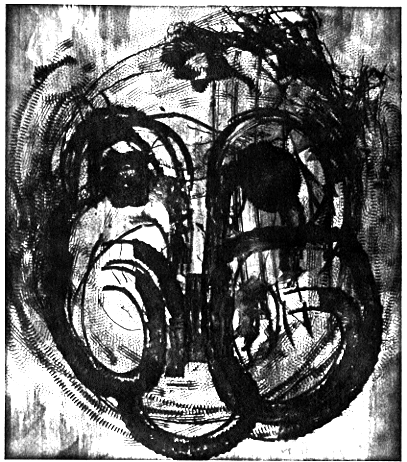
by Beattie & Davidson; 1993.
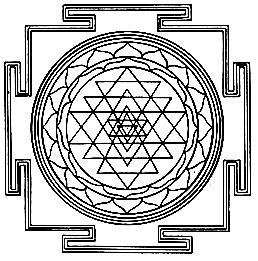
One of the more striking observations to be made about nature is the strong propensity towards symmetry and repetitive patterning. Symmetry is evident in living and non-living structures. Throughout the ages, from primitive tribal communities to modern electronic civilizations, symbols have been used to describe the simple, complex, tangible and intangible. These symbols display a wide range of materials and techniques, yet they also carry a common denominator. This common thread is the composition of symmetry which is influenced by nature and the environment. It is a recurring visual composition which has evoked passion in all human beings. But what exactly is this passion and from where does this passion come? In comparing and contrasting art objects throughout history it becomes clear that symmetry is a basic concept for creating images and that there are a wide range of objectives associated with these images. Is their an innate link between symmetry and the end goals of these art objects? Could symmetrical composition be an intricate part of defining beauty?
Symmetry is also an innate characteristic of human psychology. "As
infants, humans have a preference for looking at faces. Young infants
also prefer looking at complex patterns such as a bull's eye or a
checkerboard rather than simple ones"3. It is truly fascinating when
infants are learning to focus. Their pupils dilate and narrow as they
begin the process of vision. First in black and white and later in
color the visual world is a new experience and being able to
recognize providers and threats is a challenge. The first images
infants focus on are faces. These faces provide the infant with a
reference of survival. It is in these symmetrical images that the
newborn infant realizes a new security. The infant can find peace
and reassurance in recognizing a parent. The human being is a complex
organism which itself is symmetrical. When we first encounter a
newborn our fears are centered around health. Is the baby OK? Does
the baby have two hands, two feet, five fingers on each hand and
foot? Health is immediately perceived through visual symmetry. Once
the newborn has passed this visual exam, it is beautiful, it is
perfect, and with this notion comes a complete feeling of happiness.
A joy that dispels all the fears of deformation and proves them to be
false. Is there a link between symmetry and beauty? Is symmetry the
symbol of beauty?
What is beauty?
"The German philosopher Arthur Schopenhauer believed that the forms of the universe, like the eternal Platonic forms, exist beyond the worlds experience, and that aesthetic satisfaction is achieved by contemplating them for their own sakes, as a means of escaping the painful world of daily experience".6 These forms regularly take on the natural designs of symmetry. "George Groddeck advocated a philosophy which allowed ample space for quiet contemplation rather than eternal search. True happiness is given to the children of God in their sleep - not in any frantic striving. For the experience of happiness we need mastery of outer reality, which is symbolized in the search and mastery of the inner reality, which is symbolized in contemplation"7.
Following this trail of quotes one comes to the natural conclusion of examining the symbols of the Tantra associated with meditation. "Yantras are the most visual means used in the Tantrik cult. Among them are the diagrams in which energies are concentrated - visual parallels to the verbal mantras. They focus the energies of the meditator, and correlate all his previous efforts and knowledge into single divine images, which are often used in cumulative series. The most important part is the Shri yantra, composed of nine interpenetrating triangles, symbolic of male and female, which give rise to the circuits of other triangles. It presents a condensed image of the whole of creation"8. These Yantras (visual mantras) are symmetrical in character and are meant to be focused upon in deep contemplation to achieve nirvana, "a transcendent state free from suffering and individual phenomenal existence"9. Through analysis of these selected interpretations, beauty can be understood as that which creates happiness or satisfaction in the beholder. Without the slightest doubt beauty is in the eye of the beholder yet it consistently appears that beauty generally is observed in nature or in an image which symbolizes nature such as a Yantra. Symmetrical objects create an image from which only one type of focus is permitted, into the image. Duchamp remarks of his Bicycle Wheel: "To see that wheel turning was very soothing, very comforting, a sort of opening of the avenues onto other things than the material life of everyday"10. For Duchamp, concentrating on the spinning tire was akin to watching a fire, it enthralled him and took his mind away from the grueling concepts and decisions which he was encountering in his everyday life. It is through Duchamp's happiness in which the beauty of the Bicycle Wheel can be defined.
For Barnett Newman, his paintings were complex symbols of genesis. Though he publicly rejected "mysticism", Newman pointed out "'the artist must start, like God, with chaos, the void: with blank color, no forms, textures or details.' Newman's first move is an act of division straight down creating an image. The image not only re-enacts God's primal gesture, it also presents the gesture itself, the zip, as an independent shape"11. Newman's paintings are exceptional illustrations of symmetry in action. His "zip" divides the canvas creating two parts which together create a whole. Newman's paintings exploit the use of symmetry to achieve a personal symbolic quality. There are many artists which use symmetry to construct beauty, in spite of that, there have also been a myriad of artists which have created beautiful images using "asymmetry". How does asymmetry fit into this thesis of symmetry being the substance of beauty?
2.) Encarta-Mutimedia Encyclopedia; Microsoft(c) 1993
Funk & Wagnall's Corporation
search topic - Unified Field Theory.
3.) Dodson, Ph. D., Fitzhugh and Alexander, M.D., Ann;
Your Child: Birth to Age 6; p.148; 1986.
4.) Carson, Rachel; The Sense of Wonder; p.54; 1956.
5.) Encarta-Mutimedia Encyclopedia; Microsoft(c) 1993
Funk & Wagnall's Corporation
search topic - Aesthetics.
6.) ibid.
7.) Grotjahn, M.D., Martin; The Voice of the Symbol; p.39; 1971.
8.) Rawson, Phillip; Tantra: The Indian Cult of Ecstasy; p.33; 1973.
9.) Encarta-Mutimedia Encyclopedia; Microsoft(c) 1993
Funk & Wagnall's Corporation
search topic - Nirvana.
10.) Duchamp, Marcel; The Creative Process
in Arman, Yves; Marcel Duchamp: Plays ands Wins;
catalog to the exhibition Marcel Duchamp
at Gallery Yves Arman, N.Y., Mar. 13 - Apr. 28, 1984 ; p.49; 1984.
11.) Hess, Thomas; Barnett Newman; p.56; The Museum of Modern Art New York; 1971.
12.) Encarta-Mutimedia Encyclopedia; Microsoft(c) 1993
Funk & Wagnall's Corporation
search topic - Symmetry.
13.) Websters Seventh New Collegiate Dictionary(c) 1967; p.55.
14.) Encarta-Mutimedia Encyclopedia; Microsoft(c) 1993
Funk & Wagnall's Corporation
search topic - Ma Yuan.
Other Sources
Rushing; Ritual and Myth: Native American Culture and Abstract Expressionism in The Spiritual in Art: Abstract Painting 1890 - 1985; Los Angeles County Museum of Art; p.291; 1986.
Collier, Graham; Art and the Creative Consciousness; p.97; 1972.
Burnham, Jack; The Structure of Art; p.28; 1971.
Rubin, William; Frank Stella; p.22; 1970.
David Salle; Museum Boymans-van Beuningen Rotterdam, Feb. 26 - Apr. 17, 1983 p.38; 1983.
Richter, Gottfried; Art and the Human Conciousness; p.70 - 80; 1982.
Gablik, Suzi; Progress in Art; p.82; 1976.

by Beattie & Davidson; 1993.
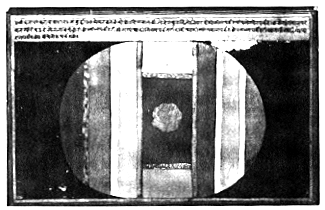
Rajasthan; 18th century
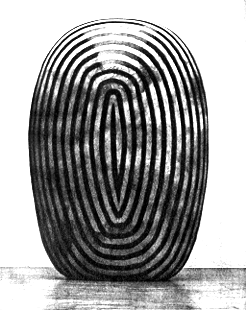
by Jun Kaneko; 1993
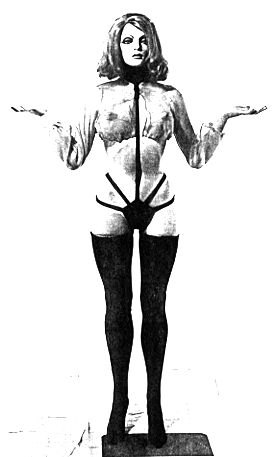
by Allen Jones; 1969
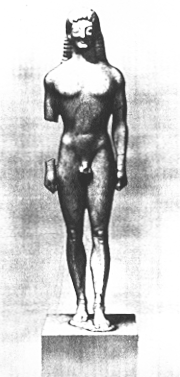
Corinth; 550 B.C.
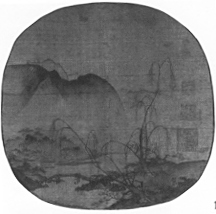
by Ma Yuan; late 12th century


